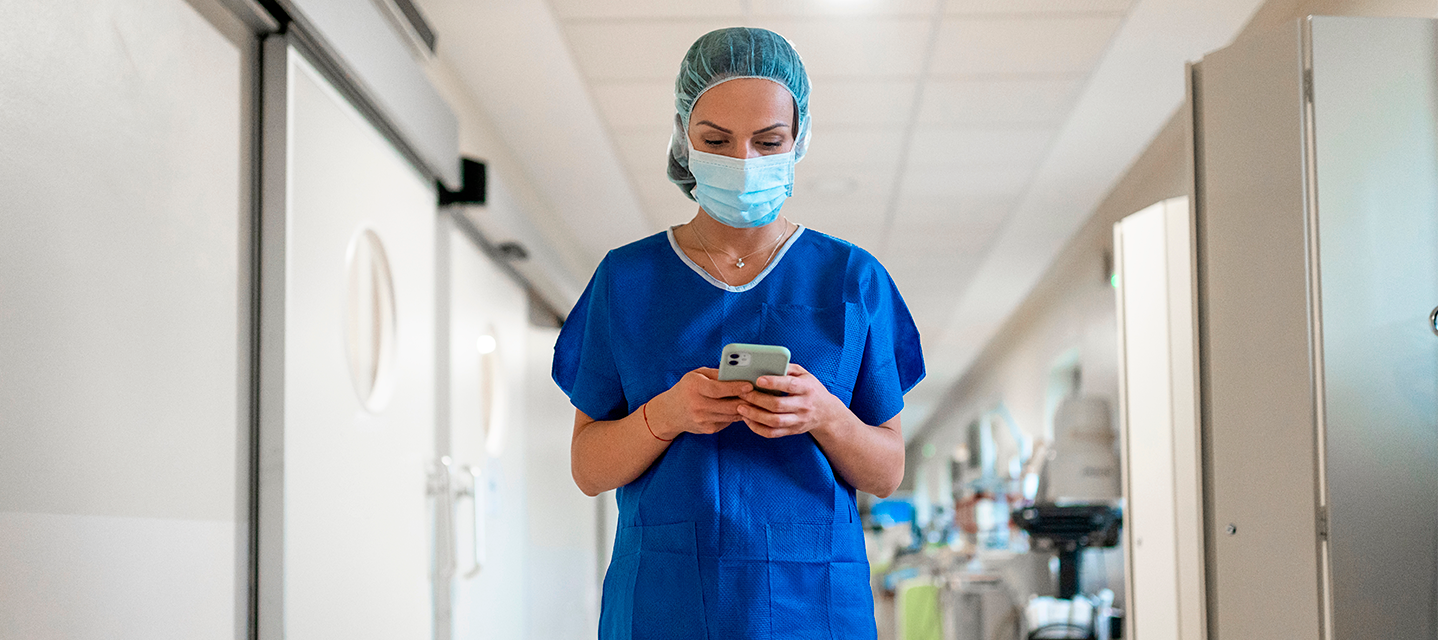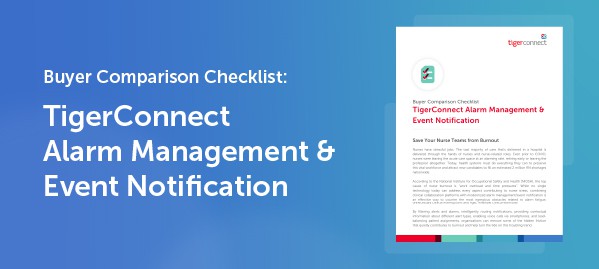Home / Blog /
The CNO’s Guide to Alarm Management & Event Notification

The CNO’s Guide to Alarm Management & Event Notification
Reduce common stressors faced by today’s nurses with a trusted alarm management vendor
When it comes to the hospital environment, nurses have their hands full. They manage intake, monitor patients, administer medication, coordinate and deliver care, maintain records, and when there’s a crisis – nurses are on the front lines. There’s no question that nurses have high-stress jobs. According to the National Institute for Occupational Safety and Health (NIOSH), the top cause of nurse burnout is “work overload and time pressures.”¹
More than one million seasoned RNs are expected to retire by 2030, therefore it is crucial that health systems do everything they can to support this vital workforce. While there is no cure-all solution, alarm management and event notification technology is a powerful tool for reducing contributors to burnout – such as alarm fatigue, unnecessary clinical interruptions, and rigid, inflexible workflows.
Buyer Considerations for Clinical Alarm Management Solutions
Use this checklist to evaluate the capabilities of TigerConnect Alarm Management & Event Notification.
|
 |
Alarm management and event notification solutions have the capability to:
- Filter and prioritize alerts and alarms and intelligently route notifications
- Provide contextual information about different alert types
- Enable voice calls via Clinical Communication & Collaboration solution
- Load-balance patient assignments
By considering the questions below, your alarm management committee can evaluate vendor solutions based on clinical best practices, technological innovation, and potential return on investment. Your committee can then take action to reduce the hidden friction that contributes to nurse burnout.
1. Does the solution offer flexible workflow configuration?
You should not have to call your vendor whenever you want to scale your deployment to other departments or adopt new use cases. The value of cloud-based alarm management and event notification solutions enables healthcare organizations to scale as their needs demand. You can implement at a pace that makes sense for your organization – centralize, standardize, and scale now or in the future while reducing the burden on IT. Make sure the solution you select offers an easy-to-use, flexible workflow builder and a staff assignment client.
The right caregiver must receive alerts and alarms in real time. Ensure your solution is a component within your clinical collaboration platform to ensure responsiveness, patient safety, team collaboration, and operational efficiencies. A robust CC&C should interface with existing technologies such as nurse call systems, patient monitors, EHR, LIS (critical labs), and smartbeds and use a configurable workflow to route context-rich notifications to the appropriate caregiver. The team and role-based collaboration functionality inherent to a CC&C platform enable nurses to get help when and where they need it with minimal effort. This is critical to support the emotional needs of front-line caregivers.
3. Is it secure and FDA-compliant?
Ensure your solution is cleared for secondary alarm notification and meets stringent cybersecurity standards set by the FDA. Regarding HIPAA for privacy, connectivity, and reporting, features such as secure encrypted texts, end-to-end encryption, HITRUST CSF certification, multi-factor authentication, and remote user lockout should provide you with confidence in your implementation.
4. Does it have a robust integrations library?
Maximize your investment by partnering with a vendor that offers an interoperability engine. It should be capable of combining nurse call, patient monitors, smartbeds, EHR, LIS, RTLS, and more all into a single application, thus minimizing the number of devices and tools nurses must carry and use.
By leveraging a solution that is applicable to many use-cases, nurse call workflows and notifications can be centralized, regardless of their age or manufacturer. Patient monitors and other alarming medical devices can be consumed, prioritized, and intelligently routed using context-rich notifications. Critical labs and other high-priority notifications can be expedited from any EHR or LIS in real-time to the care team wherever they are; it’s not required to be tethered to the EHR.
5. Will the vendor be a trusted partner?
Recognize that your hospital will be forging a relationship with a technology partner. Alarm management is so much more than a single-use case. Look for an expert team that has clinical expertise, is responsive, understands the variability of clinical systems and associated workflow, and is committed to delivering time and again.
The right alarm management and event notification solution will deliver notifications from the patient ecosystem to the right caregiver at the right time. The solution should also provide situational awareness and line of sight for the medical staff, operational efficiencies for each unit of the hospital, and interoperability, flexibility, and scalability for the IT and support teams.
Download the Alarm Management & Event Notification Buyer Comparison Checklist. This all-in-one checklist includes key features, competitive comparisons, and a glossary to inform your buying decision.
Tags: nurse call system, alarm fatigue strategies, alarm and event management, clinical alarm systems, TigerConnect Alarm Management & Event Notification, Alarm Management, Clinical Alarm Management, Nurse Call, Nurse burnout








